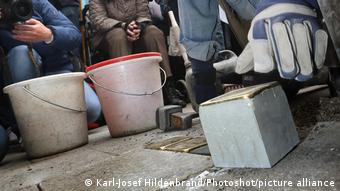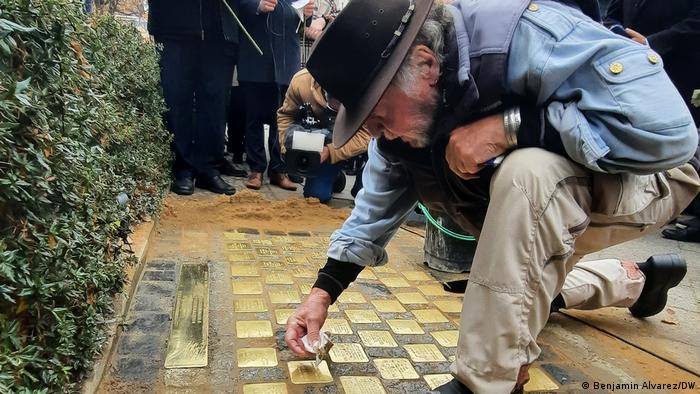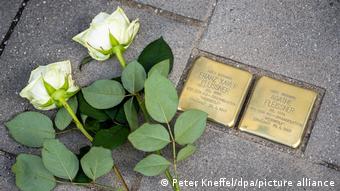The 100,000th anniversary of a Nazi victim is celebrated on May 26th in Nuremberg. “Stolperstein” has been laid. Gunter Demnig's art project is the largest decentralized Holocaust memorial in the world.

Stumbling blocks commemorate the victims of the Nazis. Gunter Demnig's art project now counts 100,000 such stones
The latest stumbling block is a reminder of Johann Wild from Nuremberg, who was executed by the National Socialists in 1941 because he had written letters denouncing the Nazi regime. Each of the brass plaques embedded in the ground to this day refers to the fate of a person who was persecuted, deported, murdered or driven to suicide by the Nazis.
Demnig and others place them on sidewalks in front of the last residential area 100,000 stumbling blocks have been installed in 27 European countries to date.
Art campaign initially illegal

The artist Gunter Demnig has now laid exactly 100,000 stumbling blocks
Demnig's art project began eleven years ago, at that time still as an illegal laying action in Cologne, because without official permission. The occasion was the 50th anniversary of the so-called Ausschwitz Decree by Heinrich Himmler, one of those primarily responsible for the Holocaust.
With the decree, the former Reichsfuhrer SS ordered the deportation of all Sinti and Roma living in the German Reich. With his stumbling blocks, Demnig relies on a private form of remembrance – apart from the state culture of remembrance in Germany.
“The stumbling blocks are my life's work,” says the 75-year-old sculptor. He lives with his wife Katja in Alsfeld-Elbenrod in central Hesse. His trademark is a wide-brimmed brown cowboy hat The dice are still laid by yourself. More and more often, others are taking over. The names and fate of the victims are engraved on the brass plaques on the stones.
More effective than a history book
Memory of Jewish Victims
The artist remembers many stories to this day. “Once, during a transfer, two sisters came,” he says. “One was from Colombia, the other from Scotland, both had been saved by a Kindertransport at the time, the parents were murdered. They hadn't seen each other for 60 years and said: “Now we're reunited with our parents.” Demnig slaps his eyes with his flat hand and fights back tears: “Then you know why you're doing it. “

Brick by brick – this is how the world's largest decentralized memorial was created
The initiative to lay the stones now comes from history associations, citizens' initiatives, relatives or school projects that inquire about Demnig. One stone costs 132 euros including installation.
Anyone who encounters such a stumbling block on a walk stands still. Who is the person you are talking about? And what happened to this man? Demnig is happy about this effect: “It makes a difference whether the young people open a book and read about six million murdered Jews or learn about the fate of a family on site,” the artist is convinced.
Also criticism of the stumbling blocks

The artist Gunter Demnig laying his stumbling blocks in front of the Foreign Office in Berlin
But there has also been criticism of his stumbling blocks, for example from representatives of Jewish organizations. Charlotte Knobloch, President of the Jewish Community in Munich and Upper Bavaria, accuses Demnig of the fate of the victims being trampled on in the truest sense of the word.
The artist calls this an “unspeakable counter-argument” and rejects it: The critics would play down the atrocities of the Nazis with such statements and mock the victims: “The Nazis were not satisfied with trampling on the victims. They had a targeted extermination program,” says Gunter Demnig.

Gunter Demnig's mission: Stolpersteine are supposed to help Nazi victims give back their name and dignity
The Stolperstein inventor has also received death threats. That doesn't deter him from his mission. Everywhere where the National Socialists raged, he wants to remind people of their crimes. And He wants to give the victims of the Holocaust their names and their dignity back.People who have looked at the stumbling blocks in the past usually didn't know the life story behind the names.That's changing now.A Cologne marketing agency has been supporting the stumbling block project for a year – with an app for the smartphone. This not only makes it easier to find the stones in the maze of streets. The names can now also be used to get to know people's personal fates.